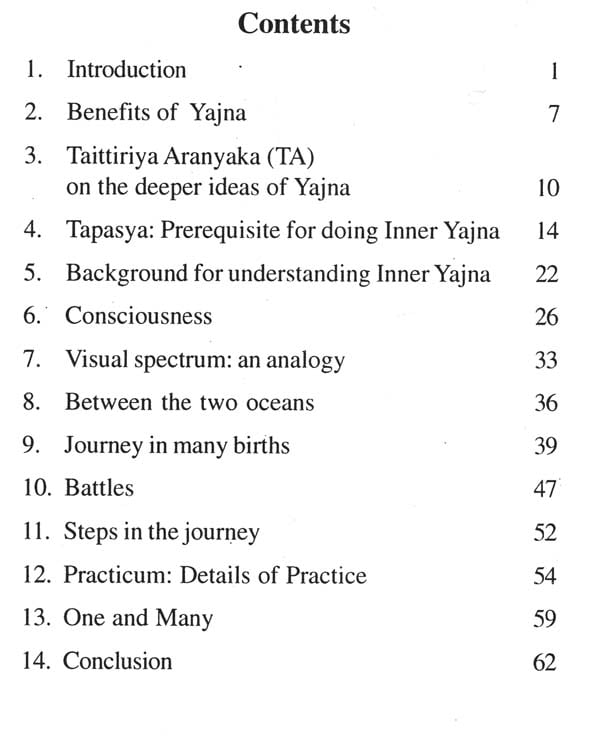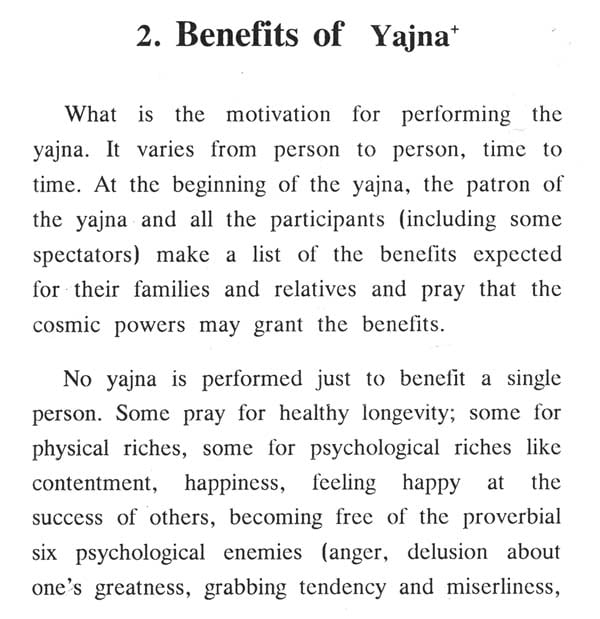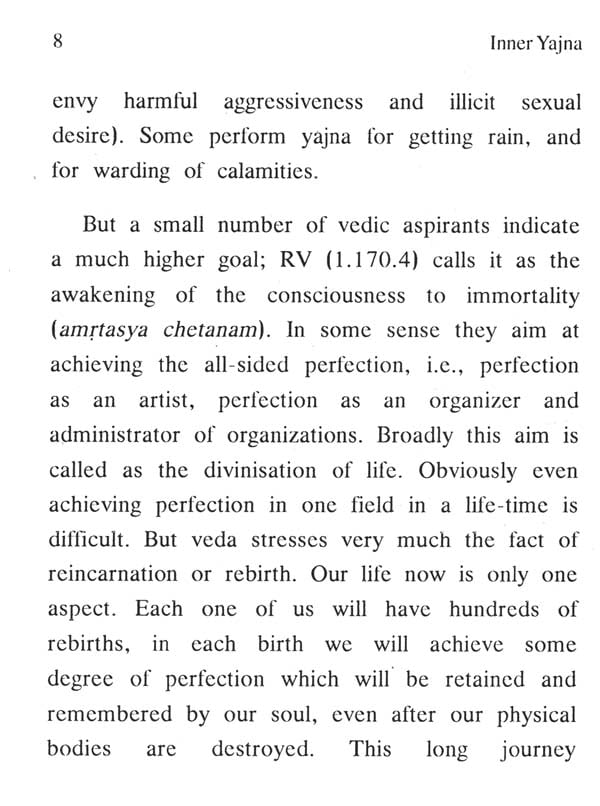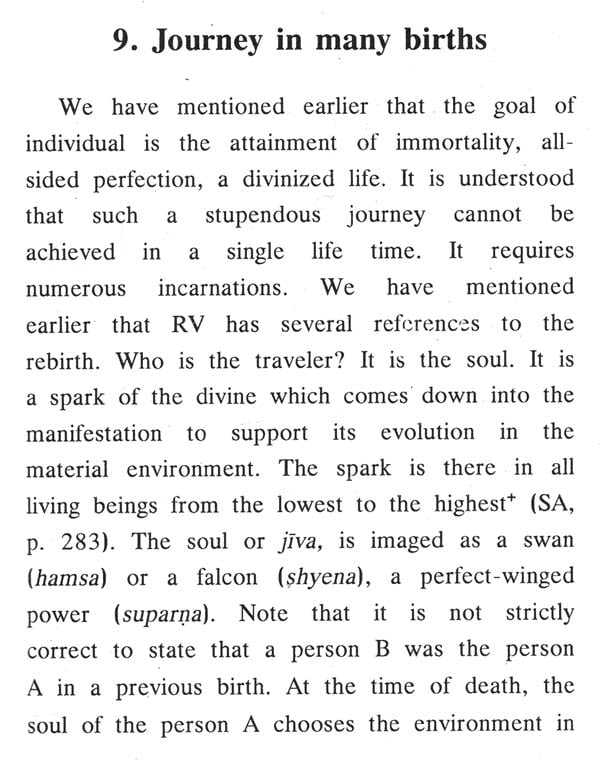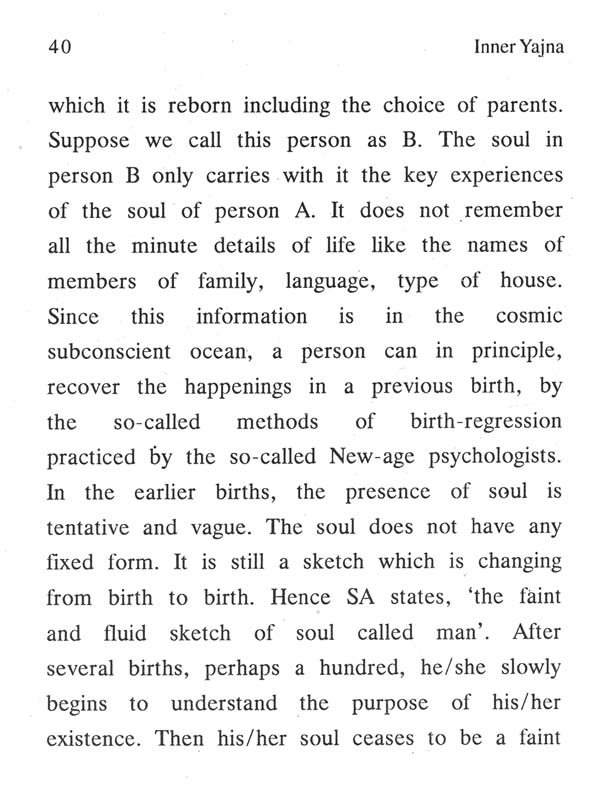
Inner Yajna (For All-Round Perfection)
Book Specification
| Item Code: | NAW976 |
| Publisher: | Sakshi Sapra |
| Language: | English |
| Edition: | 2018 |
| Pages: | 69 |
| Cover: | PAPERBACK |
| Other Details | 5.50 X 4.00 inch |
| Weight | 40 gm |
Book Description
SAKSHI has already published a book with the title, `Yajna: Physical and Subtle'. So a natural question is its relation to the present book. This book is a companion to the earlier mentioned book on Yajna. There is very little overlap between the two books.
Two basic reasons are there for publishing this book. The book Taittiriya Aranyaka has deep and detailed discussion on the inner yajna in its third prashna having about 108 verses. These ideas are not in the earlier yajna book because the translation of Taittiriya Aranyaka was not available. Now it is made available.
The second reason for this book is the mention of the topic of tapas. Without some practice of tapas, no progress can be achieved in our inner yajna.
Three verses of Bhagavad Gita give the basis for the practice of tapas which can be practiced by any person who is engaged in some profession for 8 hours a day. What is mentioned in Puranas about tapas are only exagerrations. This topic is in chapter 4.
The earlier book in page 4 gives a compact definition of Yajna. "It is a sequence of sacred actions to involve the presence of supraphysical cosmic powers such as the mystic fire(Agni), the mystical wind (Vayu) and others".
The meanings of the words, 'sacred', 'cosmic power' and 'spirit' are clarified there.
Yajnas are divided into two groups namely, `the outer (or bahya) yajna', and 'the inner (or antar) yajna.'
The outer yajna has to be performed by several persons (priests) acting in harmony using a variety of materials such as the Vedic altar, offerings and others. But it is a basic mistake to view the bahya yajna a purely as a ritual. Each step there has a deeper idea given in Taittiriya Aranyaka (3.1.1) (TA) which is not known to many. The great Swami Varada Ranga Priya in Bangalore taught us about this aspect. The TA is handled in chapter 3.
The internal yajna can be done by one person without using any external materials. The performer chants consciously the mantras and visualizes the various steps in his/her subtle body. Effectively it is the Jiva or the soul which is the performer of the inner yajna. Inner yajna is different from inner worship, described in the next page.
The popular Hindu tradition has several methods of worshiping the deities or deva-s (devi-s) who are cosmic powers. In the simplest version a murthy (or icon) of the deva is worshipped in a method of 16 steps. It is clearly understood that the murthy is a symbol of the cosmic power and it is energised by elaborate methods such as prana pratishtha. Persons with some subtle development can feel the presence of the deity in the icon. This is the so called outer worship (baya).
Another less widely used method is the inner worship. Here the worshipper envisions the deity in a suitable form (similar to that of the murthy) in his/her subtle body and gives the various offerings by means of the flowers which are also imagined.
Both these methods of worship are quite different from the yajna in the Veda.
Yajna is usually translated as sacrifice, this is a big mistake. The English word sacrifice implies a sense of regret. An instance is the usage 'I sacrificed my life and gave up my happiness for the sake of my parents.'
The classic scripture Bhagavad Gita clearly states that Yajna does not mean 'giving up'. It uses the word `Jnana yajna'. It would be foolish to translate it as 'giving up jnana or knowledge'. The deeper meaning of yajna can be obtained by considering the two syllables ya and jna. ya indicates effort or striving; jna indicates something regarded as sacred. Thus yajna means `the striving to attain something sacred'. Jnana yajna in BG means striving to understand the sacred knowledge jnana.
Simple conscious chanting
The earlier yajna book, part II, mentions several different methods of inner yajna involving the conscious chanting of mantras by an individual, without using any external ingredients. Clearly it is a simpler type of inner yajna to be distinguished from the deeper inner yajna indicated in chapter 3 here.
**Contents and Sample Pages**
